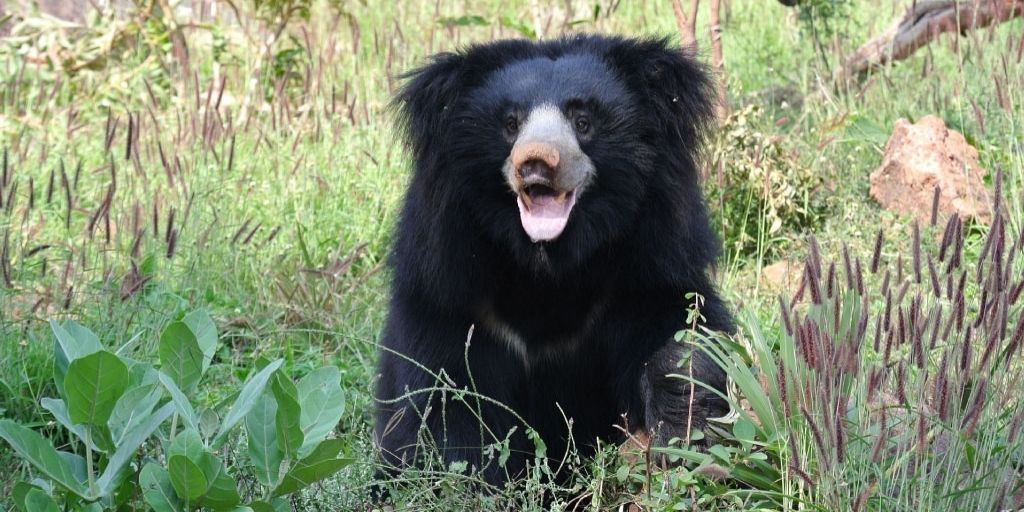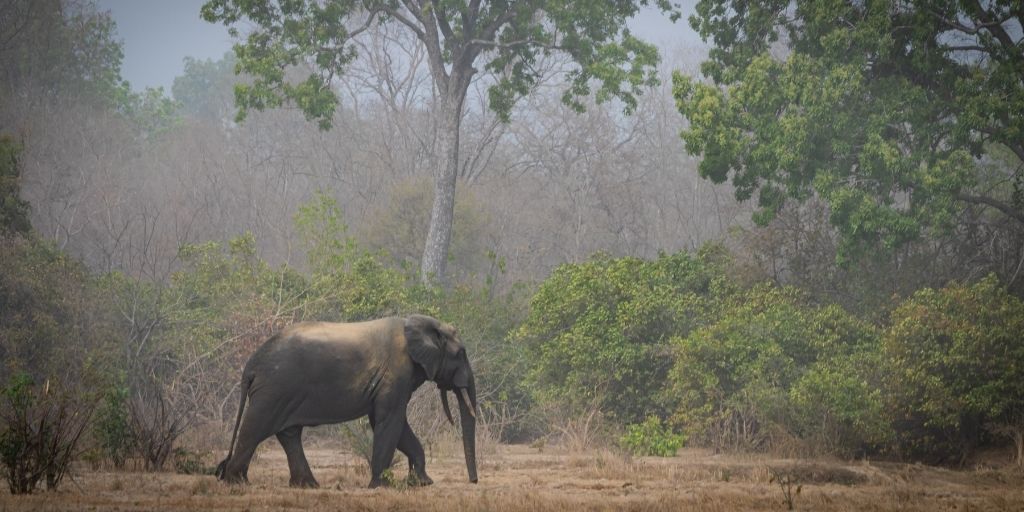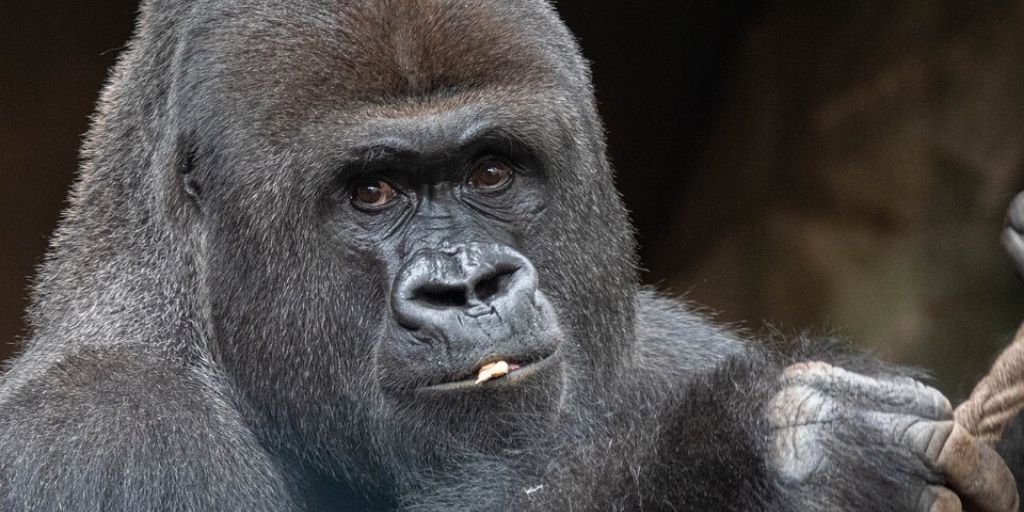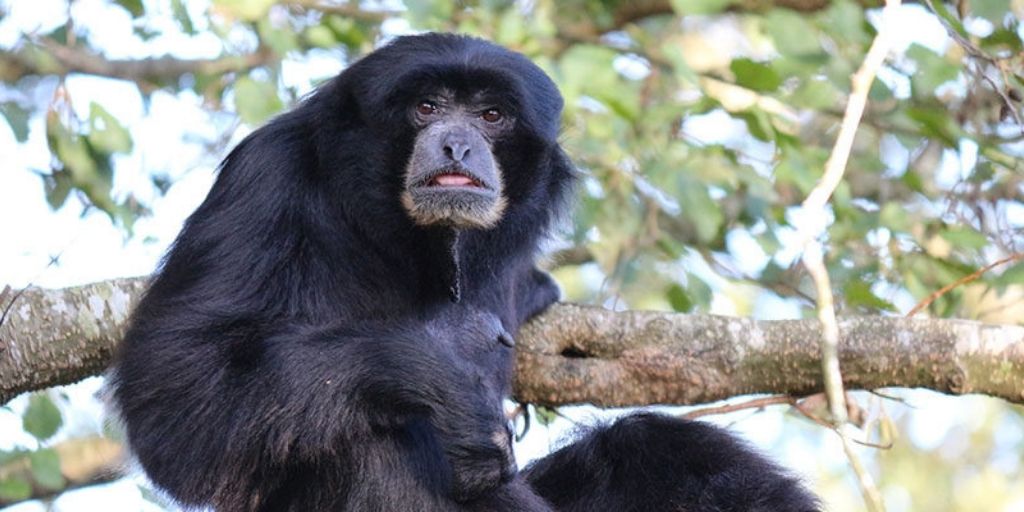Jungle animals are some of the most diverse and numerous of any habit on the planet. Before we look at some iconic jungle species it’s worth taking a moment to understand exactly what we mean by the term ‘jungle’.
What exactly is a jungle?
Nearly everyone has an idea about how they’d define the biome, and usage of the term ‘jungle’ has evolved significantly over the past fifty or so years.
Prior to the 1970s, all tropical forests were generically referred to as jungle, whether they were rainforests, cloud forests, or mangroves. Since then the terms ‘tropical forest’ and ‘rainforest’ have more or less completely replaced the term ‘jungle’ to describe humid tropical forests.
These days ‘jungle’ is used to describe the ground level of densely forested tropical areas where there is tangled vegetation and underbrush. Plants such as shrubs, grasses, vines, and moss thrive in jungles, which makes it very difficult for humans to penetrate on foot without cutting a path through.
Put simply, a jungle is a forested area that combines warm temperatures with dense, ground-level vegetation.
Is there a difference between a jungle and a rainforest?
Rainforests and jungles are similar in many ways – they are both warm, tropical forest habitats filled with thick vegetation – but there are also some key differences.
Jungles don’t have as much skyscraping vegetation, so unlike rainforests don’t have a thick canopy. In a rainforest the canopy block sunlight reaching the forest floor, so restricts vegetation growing on the forest floor, and holds in the moisture and humidity.
Because jungles have a much sparser canopy they are drier and lighter than rainforests and have much more vegetation growing at ground level.
13 Iconic jungle animals
Like rainforests, jungles tend to be areas unhampered by humans, so can provide one of the most exhilarating places (if difficult) places to spot wild animals in their natural habitat. Here’s our pick of 13 of the most iconic jungle animals:
One horned rhino (Rhinoceros unicornis)
Found: India and Nepal

one horned rhino
Whilst Africa’s rhinos are beasts to be extremely wary of, north-east India is home to the relatively approachable one-horned rhino. The expansive flat grasslands of Kaziranga National Park is fringed with jungle has a population of over 1,600 Indian one-horned rhinos, comprising over two-thirds of the world’s total.
The extra twist with rhino-spotting in Kaziranga is the option of an elephant-back ride around the park, which allows you to get within a couple of meters of the very relaxed rhinos.
Asiatic lion (Panthera leo persica)
Found: India

asiatic lion
Today’s Asiatic lion exists only in India’s Gir National Park and the surrounding areas. The habitat in the park is dry scrub land and open deciduous forest, which could certainly be described as jungle. There are around 300 Asiatic lions in Gir National Park and perhaps only 500 left in the whole world.
Sloth bear (Melursus ursinus)
Found: Indian Sub-continent

A sloth bear in grassland
Sloth bears live in a range of dry and moist forests across the Indian subcontinent, seeking out trees, boulders, and shrubs to provide shelter. They are omnivorous but tend to stick to a diet of ants, termites, and fruits. Not yet endangered, sloth bears are listed by IUCN as vulnerable due to habitat loss.
Elephant (Loxodonta)
Found: West and Central Africa and South Asia

African forest elephant on the edge of the jungle
Whilst African elephants thought of as being found out in the open on the African savannas, there is a second elephant species in Africa known as the African forest elephant. As with their Asian elephant cousins, African forest elephants are significantly smaller than African savanna elephants, to allow them to move with suprising ease through the dense jungles and rainforests of West Africa and the Congo Basin.
African forest elephants and Asian elephants have similar diets of fruits, seeds, and young leaves, and a more varied diet than the African savanna elephant due to the richness of their habitat. They are considered vital to their respective jungle environments as distributors of seeds, as they spend their days foraging.
Bengal tiger (Panthera tigris tigris)
Found: West and Central Africa and South Asia

A Bengal tiger lounging in the jungle shade
Bengal tigers are native to India and Nepal. These stunning cats are the most common tiger, accounting for around half the world’s tiger population. Bengal tigers are found predominantly in subtropical and elevated forests across the subcontinent, as well as thriving in the Sundarbans mango region on the India/Bangladesh border.
Chimpanzee (Pan troglodytes)
Found: West and Central Africa

Mother carrying baby chimpanzee on back
These great apes are found in a number of habitats across Central and West Africa. Chimpanzees actually have the widest range of all great apes, living in tropical rainforests and grasslands, as well as being jungle-dwelling animals.
Sharing around 99% of their genes with humans, these animals are our closest living relatives, and quite possibly the smartest animals on Earth other than Man.
Three-toed sloth (Bradypodidae bradypus)
Found: Central and South America

3 toed sloth hanging in the rainforest canopy
Sloths have an incredibly low metabolic rate and need only a few leaves and twigs for nutrition, along with a very slow digestive system leading to their sluggish pace. In combination, the sloth’s anatomical structure differs from other mammals in having very long arms with very short shoulder -blades, which allows them a large reach without the effort of too much movement, and adds to their languid style of movement.
The three-toed sloth is, in fact, the slowest mammal in the world, moving at the hair raising speed of up to 2.4 meters per minute on the ground. When they’re up in their favored rainforest canopy they’re able to pick up their speed to around a 4.6 meters per minute.
Jaguar (Panthera onca)
Found: Central and South America

A stunning jaguar walks towards the camera
Jaguars are found in South and Central America, preferring wet lowland habitats, swampy savannas, and tropical rain forests. They are known to almost anything they can catch, including deer, crocodiles, snakes, monkeys, deer, sloths, tapirs, turtles, eggs, frogs and toads, and fish. The jaguar has the strongest bite of all the cat family – with a bite-force 1.4M kg per m² its bite is twice as strong as a lion’s.
Learn more about jaguars. How are jaguars different from leopards?
Gorilla (Gorilla)
Found: West and Central Africa

A western lowland gorilla gives the camera the eye
Although the most numerous of all gorilla subspecies, the western lowland gorilla (pictured) is still an endangered species. They inhabit the remote, dense tropical rainforests of Angola, Gabon, Cameroon, the Central African Republic, the Democratic Republic of Congo, and Equatorial Guinea.
Their remote and secluded habitats make it difficult to accurately estimate their numbers, but conservationists put the total population at almost 100,000. This number is known to be decreasing, however, with the animals threatened by poaching, disease, climate change, habitat degradation, and destruction.
Okapi (Okapia johnstoni)
Found: Democratic Republic of the Congo

An okapi’s head and hindquarters
Despite having zebra-like markings the rare and unusual looking okapi is actually a member of the giraffe family. Their striking striped hindquarters camouflaged them and help them disappear into the forest.
Living in the dense tropical rainforests of Central Africa they use their long, sticky, giraffe-like tongues to graze on leaves, ferns, grasses, and fruit.
Black howler monkey (Alouatta caraya)
Found: South America

Black howler monkey
The black howler monkey is so named because of the loud howl it makes when marking its territory. Their call has been described as a strong wind blowing through a tunnel, and can be heard up to 3 kilometers away, carrying across the jungle vegetation.
Sulawesi bear cuscus (Ailurops ursinus)
Found: Indonesia

Sulawesi bear cuscus
The Sulawesi bear cuscus is actually an arboreal marsupial rather than a bear but is so named for it’s dark, thick bear-like fur. As with most marsupials newborns are underdeveloped and carried in a pouch on the mothers’ belly until they can navigate the Indonesian jungle themselves.
Siamang (Symphalangus syndactylus)
Found: South East Asia

Siamang chilling in the canopy
Growing up to 1.5meters long siamangs are the largest species of gibbons in the world. They have long, shaggy black hair and a mostly hairless face, and are known for their loud whooping call made using an inflatable throat pouch. As with black howler monkeys, these calls are used to mark territorial boundaries between groups.
What did you think of these iconic jungle animals? Have you had the opportunity to see any of these creatures in the wild? Let us know in the comments section below!



Discover more of our wildlife posts…
What Are The Most Dangerous Animals In Africa?
April 14, 2020/by EdBirds That Mate For Life
September 30, 2020/by EdUnderstanding Keystone Species
December 9, 2020/by EdAfrican vs Asian Elephant, Which Is Which?
August 25, 2020/by EdThe Smallest Mammals In The World
October 15, 2020/by EdUgly Animals
October 1, 2020/by EdThe Heaviest Animals In The World
May 29, 2020/by EdThe Largest Birds Of Prey In The World
September 16, 2020/by EdWhat Do Elephants Eat?
October 14, 2020/by Ed